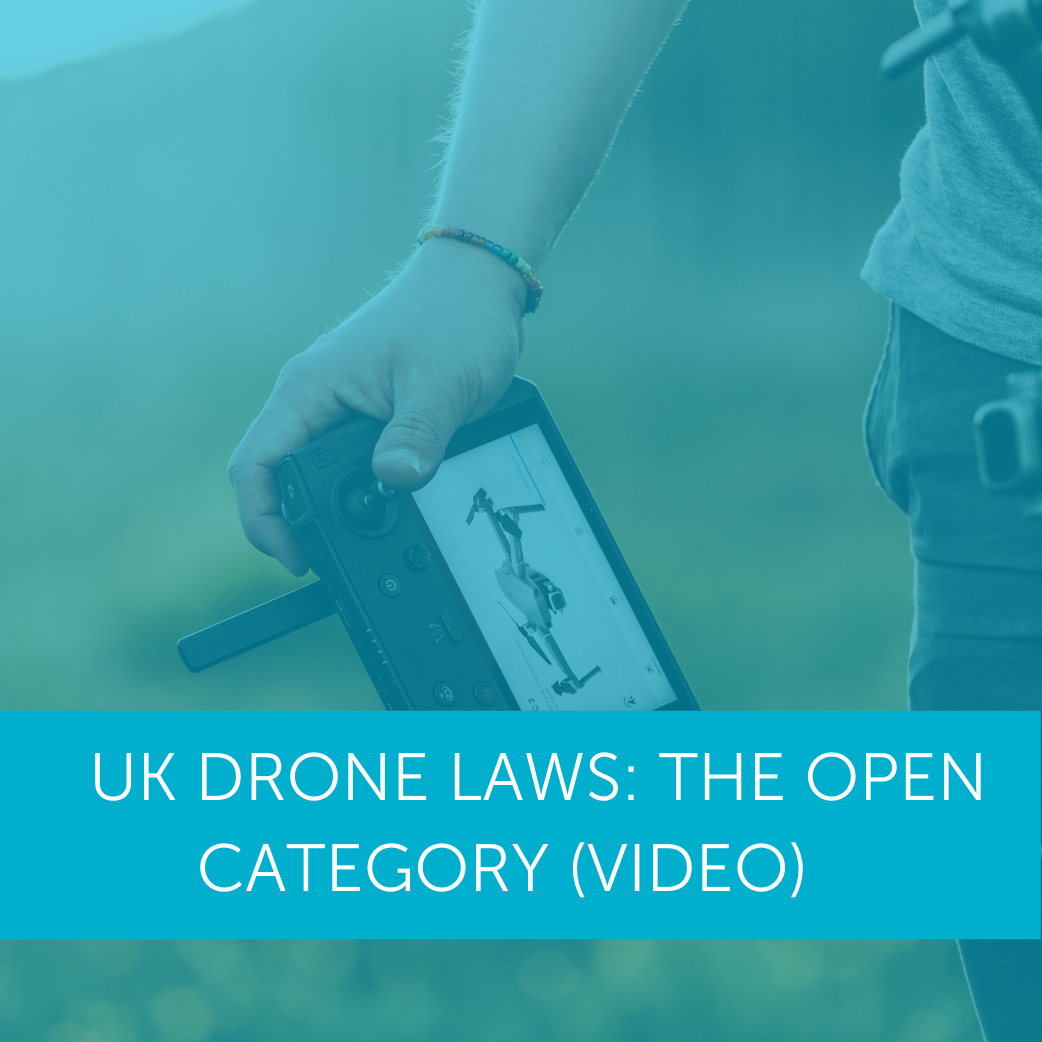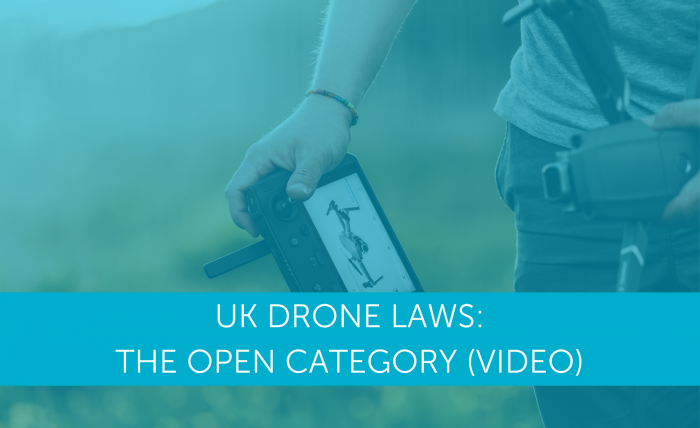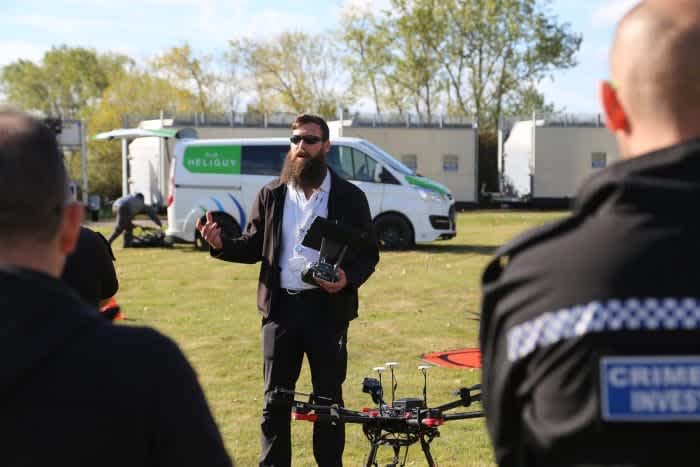
Training & Regulations
UK Drone Laws: The Open Category (Video)
Second in a series about new UK drone laws starting in July. This video looks at the Open Category, including the A1, A2 and A3 subcategories, and the A2 CofC. ... Read More

UPDATE (June 8, 2020): The European drone regulations which were set to start in the UK in July, and then in November, have been delayed for a second time and will now start on December 31, 2020. Read more about it and how it affects you here.
This is the second video in the series. The others are:
Transcript: UK Drone Laws - Part Two, The Open Category
Please note that some of the information in the transcript has been changed to reflect the delayed start to the drone regulations in the UK.
Hello, and welcome to this, our second video in our series covering the new European regulations.
Mini-in-stock-12-2-700x366.png
Today we're going to be taking a deep dive into the Open Category and look at the subcategories within there.
I'm Ben, your host, head of training here at Heliguy, so without further ado let's get straight to the video.

The A1 Subcategory
So, let's kick off by talking about the first category - the A1 subcategory of the Open Category, which is flights over people.
So the A1 subcategory of the Open Category introduces an entirely new concept and that is flights in very close proximity or directly above uninvolved persons.
Mini-in-stock-13-4-700x366.png
This is something we've never had the opportunity to do as drone operators either in a recreational capacity or even those with the most complex OSC's (Operating Safety Cases). This is now achievable with very, very small aircraft.
In fact on the screen now you should have the table which shows the type of aircraft which can be used in the A1 subcategory.

Now as you see, it entirely depends on the type of aircraft you're using - be that C0, a C1, or your aircraft might fall into the A1 Transitional category.
I'm going to caveat the A1 Transitional category, in that, in order to operate in the A1 you actually need the A2 qualification, which we will be talking about a little bit later in the video.

The DJI Mavic Mini can be flown in the A1 Transitional subcategory, if you have an A2 CofC.
So, depending on the type of aircraft you have, you may be able to operate literally directly above uninvolved persons.
For other aircraft, there is a separation distance and you will not be able to operate directly above the uninvolved persons and so you will have to retract your aircraft away.
The requirement to operate in the A1 subcategory is the completion of the CAA's DMARES (Drone and Model Aircraft Registration and Education Service), but caveated that if you want to use an A1 Transitional aircraft (up to 500g) in this category you would need to complete the A2 CofC (Certificate of Competency).
Mini-in-stock-16-1-700x366.png
The A2 Subcategory
The next subcategory of the Open Category is the A2 - flights close to people.

Again, there are different requirements based on the type of aircraft which you're going to be using in this subcategory, in that you will be able to operate a C2 aircraft with a separation distance of 5 metres from uninvolved persons in a low-speed mode, and 30 metres in normal mode.
Now, those separation distances aren't quite as black and white as they first might appear because there's something coming in called the one-to-one rule which means that the horizontal distance of the small unmanned aircraft must be equal to or greater than the height by which it's operating.
Mini-in-stock-13-3-700x366.png
So that means you can achieve the 5-metre separation rule from uninvolved persons in a low-speed mode and your aircraft must be no higher than 5 metres. Likewise, if you want to ascend your aircraft to a height of 10 metres you would have to withdraw a minimum of 10 metres from any uninvolved person.
So whilst this does, of course, open up many opportunities to operate in the A2 subcategory, there is a small caveat on those separation distances.

The DJI Mavic 2 series can be flown in the A2 subcategory, if you have an A2 CofC.
Another benefit to operating in the A2 subcategory is the ability to exceed 400 feet when inspecting a structure which in itself exceeds 400 feet in height.
The separation distances for operating whilst inspecting these structures are horizontally 50 metres and above the structure no higher than 15 metres.
This is something we've never seen before as you don't have to get permission from the CAA because that structure already represents a hazard to aviation, so the presence of a drone in close proximity to that structure doesn't increase that risk.
This represents a huge benefit to those who are using drones in an inspection capacity because previously they'd have to find other ways to facilitate the inspection of any area of the structure which exceeded 400 feet in height.
The A2 Certificate of Competency (A2 CofC)
So for all subcategories, the minimum training requirement starts at the completion of the DMARES.
For the A2 (and also the A1 Transitional) however, you need to go one step beyond and attend the A2 CofC course with a Recognised Assessment Entity.
So the A2 CofC course is a single day event which will be offered by organisations called RAEs (Recognised Assessment Entities), such as Heliguy. We are going to be offering these courses from June 2020 onwards.
The course culminates with a 30 question multiple-choice examination with a minimum pass mark of 75%.
Now, the benefits the A2 CofC course by comparison to the current PfCO or the GVC is that you don't have to complete an Operations Manual, a practical flight assessment, or submit an application to the Civil Aviation Authority.
This means you can be operational the very next day after completing the course, however there is a practical element in that you can self-declare your own practical training. This must be conducted in the A3 subcategory but replicating the provisions of the A2 subcategory. There's also the option to complete the practical flight training with a Recognised Assessment Entity as well.
At the time of making this video, there is currently no minimum requirement, however it is expected to be released around about May time.
Unlike the current PfCO or the GVC going forward, there's no requirement to complete an Operations Manual or submit an application to the Civil Aviation Authority.
This means that you'll be able to operate in the A2 subcategory (or A1 Transitional) immediately, providing that you do the A2 CofC course after December 31, 2020. If you do the course before then, you will have to wait until that date first.
The A3 Subcategory
Finally, we're talking about the A3 subcategory, which is flights far from people.
This means that you have to maintain a clear separation between any uninvolved persons at a minimum of 150 metres, and the same distance as well from any area which is substantially used for a residential, commercial, industrial or recreational purposes.

In this category, you'll be able to operate an aircraft which doesn't exceed 25 kilograms and of course after the Transitional point, any aircraft which is being used in the Legacy categories (drones placed on the market before January 1, 2023, which don't meet the drone class criteria, ie C0-C4) for either the A1 or A2 subcategories will only be able to be used in the A3 category.
So this restricts you to pretty much benign environments, but as mentioned in the previous video, if you do happen to capture an amazing piece of footage that you want to then make money from, from stock imagery etc, then you can do so.
The Open Category - Summary
So, to summarise, in the Open Category, we have those three subcategories. That's A1 - flights over people. A2 - flights close to people. A3 - flights far from people.
Mini-in-stock-13-1-700x366.png
Also if you have any questions then, by all means, leave us a comment below and we'll get back to you or you can contact us directly via the website heliguy.com.
There's also a comprehensive overview of these regulations which is featured on the training section of the website.
At the end of the series, myself and Tom (part of the Heliguy training team) are going to be hosting a sofa session where we can answer any questions that you have which aren't answered in this series. So if you have a question that you want to feature on that video then send it in via the comments below and we'll make sure you're featured.
